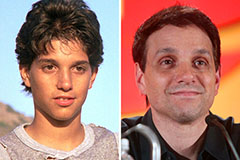Sleep Apnea Adenoid Removal (Adenoidectomy) Obstructive Sleep Apnea
Watching your child struggle to breathe at night is heartbreaking. Their tiny chest heaving, labored breaths keep you awake with worry. Could sleep apnea adenoid removal be the solution you've been looking for? Imagine your child sleeping peacefully, free from obstructive sleep apnea. This dream is a reality for many families who've tried adenoidectomy. Over 500,000 adenotonsillectomies are performed on kids each year, primarily for sleep apnea.
Sleep apnea adenoid removal uses hope for parents dealing with their child's breathing concerns. This surgery, called adenoidectomy, has actually shown fantastic success in dealing with sleep apnea brought on by huge adenoids. It's not just about better sleep; it has to do with offering your child an opportunity to thrive.
Let's look into how sleep apnea adenoid removal could help your child sleep better and be more energetic. Keep in mind, you're not alone. Countless moms and dads have found relief and hope through adenoidectomy.
Comprehending Adenoids and Their Role in Sleep Disorders
Adenoids are crucial to your child's health. They are small tissue spots in the lymphatic system. Working with tonsils, they trap germs. Located at the back of the nose, they help keep fluid balance in the body.
What Are Adenoids and Their Function
Adenoids are most active in kids. They begin to diminish after about 5 years of age. By the teenager years, they often disappear. Their main job is to capture damaging germs and infections before they cause infections.
How Enlarged Adenoids Affect Breathing
Sometimes, adenoids can grow too big, causing breathing problems. This can result in mouth breathing, loud breathing, and snoring. Enlarged adenoids can block the nose and throat passage. This can cause ear infections and obstructive sleep apnea.
Connection Between Adenoids and Sleep-Disordered Breathing
Sleep-disordered breathing impacts 6-17% of kids in the United States. Bigger adenoids can cause this. Symptoms consist of daytime drowsiness, bad concentration, and behavioral issues. If your child shows these signs, see a doctor for diagnosis and treatment.
Sleep Apnea Adenoid Removal: The Surgical Solution
Adenoidectomy is a surgery that helps kids with sleep apnea breathe better. It eliminates the adenoids, which block airways when big. Let's take a look at how it works and what you can expect.
Adenoidectomy Procedure Overview
A surgeon gets rid of the adenoids under basic anesthesia. The surgery lasts 30-45 minutes and is generally done as outpatient surgery. This suggests your child can go home the same day.
The surgeon gets to the adenoids through the mouth. So, there are no cuts on the outside.
Prospects for Adenoid Surgery
Children with repeated infections or airway blockage are good candidates. Your doctor might recommend surgery if your child snores a lot, has stops briefly in breathing, or is tired throughout the day. It's essential to speak with a pediatric ENT specialist to see if surgery is right for your child.
Healing and Post-Operative Care
After the surgery, your child will require time to recover. Many kids feel better in a week. It's key to follow your doctor's care instructions during this time.
These might include resting, drinking fluids, and consuming soft foods. Your child may have an aching throat for a couple of days. However, this generally improves quickly. With the right care, many kids see big improvements in their sleep and health after adenoid removal.
Comparing Adenoidectomy vs. Adenotonsillectomy
Doctors typically look at 2 surgical treatments for sleep apnea in kids: adenoidectomy and adenotonsillectomy. Adenoidectomy gets rid of just the adenoids. Adenotonsillectomy gets both adenoids and tonsils. Your child's doctor will select the very best one based upon their needs.
Studies suggest adenoidectomy might be better for some kids. A study of 515 kids with sleep apnea found no big difference between the two surgeries for non-obese kids with small tonsils.
Adenoidectomy has less risk and cost than adenotonsillectomy. Kids normally feel better in 3-4 days after adenoidectomy. However, tonsillectomy can take a week or more and harms more.
Tonsillectomy has more risks, like bleeding. Kids with huge tonsils or serious sleep apnea may require adenotonsillectomy. This gold requirement treatment has actually revealed terrific lead to lowering sleep apnea symptoms.
Your child's doctor will take a look at tonsil size, sleep apnea intensity, and health when picking in between adenoidectomy and adenotonsillectomy. Both surgical treatments can assist kids sleep better and breathe much easier.
Diagnosing Sleep Apnea in Children
Identifying sleep apnea in kids requires mindful seeing and specialist checks. Moms and dads are type in identifying signs. If your child snores loudly, breathes heavily, or seems tired during the day, see a doctor.
Sleep Study Assessment
A sleep study, or polysomnography, is the best way to find out if a child has sleep apnea. This test tracks your child's sleep, breathing, and heart rate all night. It helps doctors figure out how bad the sleep apnea is and what treatment is needed.
Common Symptoms and Warning Signs
Watch for signs of sleep apnea in your child. Look out for trouble focusing, acting out, and loud snoring. click here for more info The Pediatric Sleep Questionnaire can help check for sleep problems. If your child scores high on this test, they might have sleep issues.
Role of Medical Evaluation
An in-depth medical check is crucial for a correct diagnosis. Your child's doctor will take a look at their health history, do a physical examination, and may recommend more tests. This mindful procedure assists prepare the right treatment, which could be basic modifications or perhaps surgery like getting rid of adenoids.
Treatment Outcomes and Success Rates
Adenoidectomy has actually revealed great results for kids with sleep apnea. Studies show high success rates, with many kids seeing huge enhancements in sleep.
Long-lasting Benefits of Adenoid Removal
Getting rid of adenoids brings long-lasting advantages. Studies discovered a drop in apnea-hypopnea index by 12.4 events per hour. This indicates better breathing and sleep for kids after surgery.
Elements Affecting Surgical Success
A number of things can change how well adenoidectomy works. Being overweight, the size of the tonsils, and how bad the sleep apnea is matter a lot. Kids under 7 who are not overweight and have small tonsils tend to do well. But, kids who are overweight might not see as much improvement.
Post-Surgery Sleep Improvement Statistics
Most kids see better sleep after surgery. Research shows a success rate of 66.3%. When success is specified as an apnea-hypopnea index listed below 5, the rate is 66.2%. These numbers click this demonstrate how reliable adenoidectomy remains in assisting kids with sleep problems.
Concluding
Dealing with sleep apnea in kids needs a custom plan. Adenoid removal is showing great advantages. It's an essential part of treating sleep apnea.
Children with sleep apnea need treatments that fit their needs. Some might just require adenoid removal. Others may require more surgery. Studies reveal surgery can truly help kids with serious sleep apnea.
Choosing the right treatment depends on your child's age, weight, and how bad their sleep apnea is. Untreated sleep apnea can cause huge illness. Dealing with doctors can assist discover the best treatment for your child. This ensures they get the sleep they need for good health.
FAQ
Q: What are adenoids and how do they affect sleep?
A: Adenoids are tissue behind your nose that aid battle bacteria. When they grow too huge, they can block breathing. This can result in snoring and sleep apnea in kids.
Q: How is adenoidectomy performed for sleep apnea?
A: Adenoidectomy is a surgery to remove big adenoids. It's done under general anesthesia and takes about 30-45 minutes. You can generally go home the very same day. It assists deal with sleep apnea triggered by big adenoids.
Q: What's the difference between adenoidectomy and adenotonsillectomy?
A: Adenoidectomy gets rid of just adenoids. Adenotonsillectomy gets rid of both adenoids and tonsils. For kids with small tonsils and moderate OSA, adenoidectomy might be enough. But for click this over here now more serious cases, adenotonsillectomy is needed.
Q: How is sleep apnea diagnosed in children?
A: Doctors use several methods to detect sleep apnea in kids. The primary one is a sleep study called polysomnography (PSG). They likewise look at symptoms like loud breathing and daytime fatigue. A sleep specialist's evaluation is key for a proper diagnosis.
Q: What aspects impact the success of adenoid removal for sleep apnea?
A: Success depends on a number of things. These include obesity, tonsil size, and how bad the OSA is. Kids who are not obese, under 7, with small tonsils and moderate OSA tend to do well. Your child's particular scenario will direct the best surgery.
Q: How long is the recovery period after adenoidectomy?
A: Recovery time differs, however a lot of kids can get back to normal in a week. You'll get care instructions to assist recovery and prevent problems. Following these carefully is essential for a smooth Sleep Apnea Adenoid Removal recovery.
Q: Can sleep apnea in children be misdiagnosed?
A: Yes, sleep apnea can be misinterpreted for ADHD because of comparable symptoms. This reveals why an appropriate sleep check is essential if your child has sleep issues.
Q: Are there any alternatives to surgery for dealing with sleep apnea in children?
A: Surgery is typically the very best choice for big adenoids. But, other treatments might be thought about based on the severity and cause. These could consist of click here for more info weight-loss, special sleep positions, or CPAP therapy. Constantly talk with a sleep specialist to find the very best treatment for your child.
 Ralph Macchio Then & Now!
Ralph Macchio Then & Now! Joshua Jackson Then & Now!
Joshua Jackson Then & Now! Talia Balsam Then & Now!
Talia Balsam Then & Now! Matilda Ledger Then & Now!
Matilda Ledger Then & Now! Jane Carrey Then & Now!
Jane Carrey Then & Now!